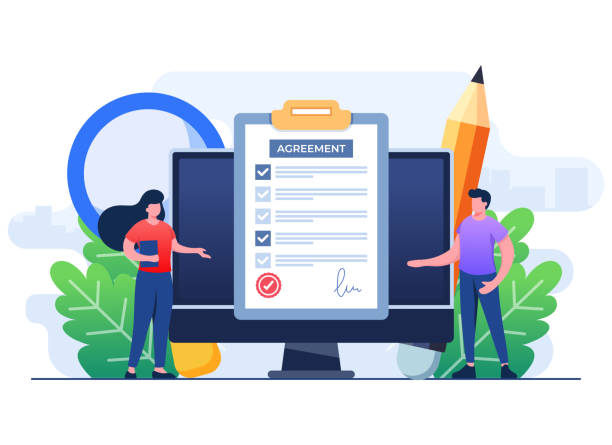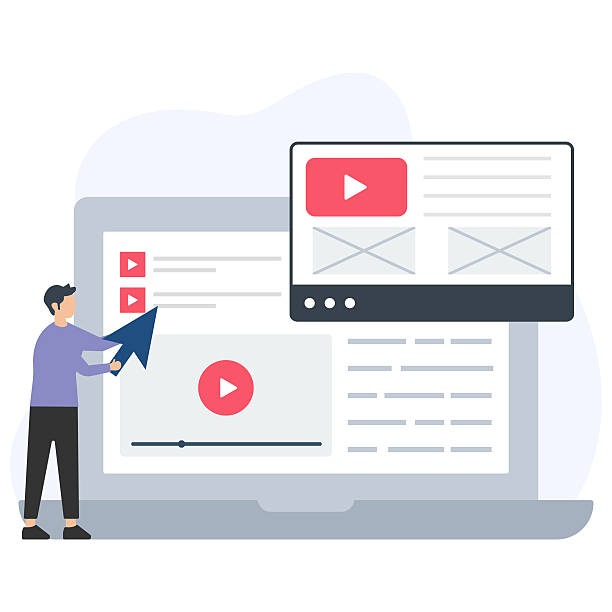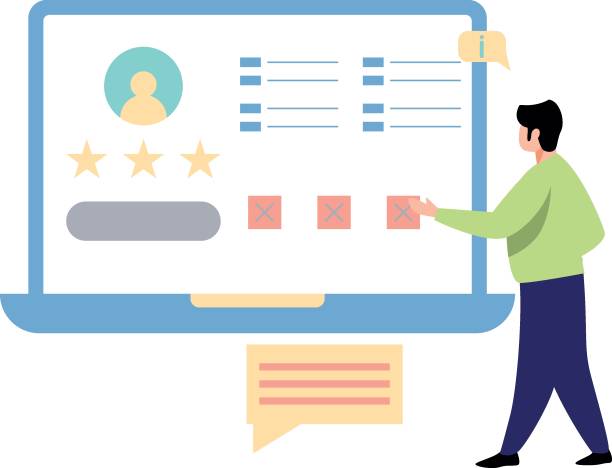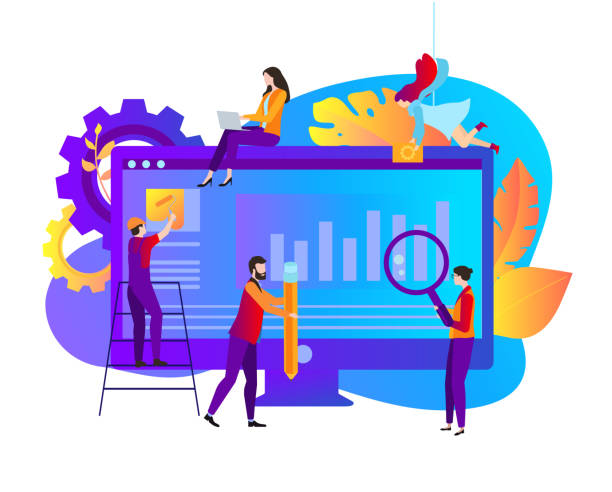Introduction and Importance of Personal Website Design
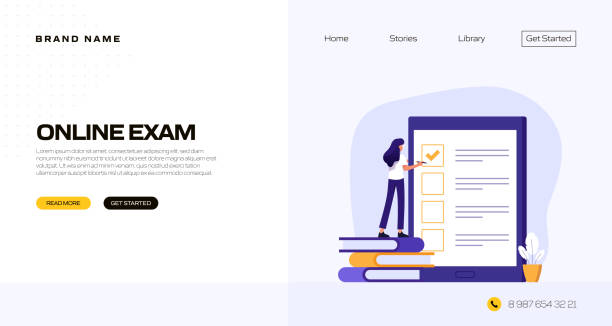
In today’s world where digital communication plays a pivotal role, having a personal website is no longer a luxury, but a vital necessity.
Designing a personal website allows you to build your digital identity, showcase your skills, share your experiences, and connect more deeply with your audience.
This #personalized platform acts as your online business card, but it’s much more than that; your website can be a gallery, a diary, a dynamic resume, and even a small store.
The importance of web design lies in empowering you to have complete control over your personal brand, unlike social networks that have their own rules and limitations.
With a professional personal website, you can increase your credibility and attract new job opportunities or collaborations.
This is a long-term investment in your career and personal journey that will yield significant returns.
Many successful individuals in various fields have achieved fame and success using their personal websites.
From artists and writers to experts and consultants, everyone can benefit from the countless advantages of a personal website.
The goal of this article is to guide you step-by-step through the process of personal website design so you can manage your online presence in the best possible way.
From domain selection to search engine optimization, all key points will be covered to help you have an effective and attractive website.
Your website is the showcase of your skills and personality, so exercise utmost care in its design.
Does your current website build the trust that potential customers should have in your business? If not, it’s time to have your professional and impactful corporate website with Rasaweb.
✅ Fully custom design tailored to your brand identity
✅ Increased lead generation and business credibility in the eyes of customers⚡ Contact us for a free consultation!
Initial Planning Stages for Your Personal Website
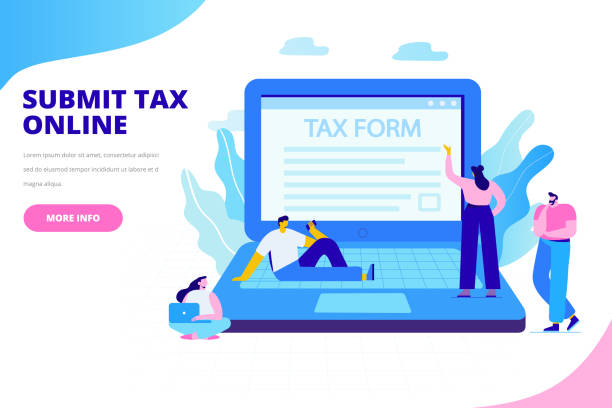
Prior to any practical steps for personal website design, precise and purposeful planning is of paramount importance.
This stage will be the cornerstone of your website’s success and will help you have a clear path to achieve your goals.
The first step is defining the main objective of the website.
Do you want to showcase your online resume? Do you intend to produce educational content? Or perhaps you want to create a portfolio for yourself? Answering these questions will help you choose the appropriate structure and content.
After defining the objective, identify your target audience.
Who will visit your website? Professionals, students, employers, or the general public? Knowing your audience helps you choose the right language, design, and content type.
The next step is gathering and organizing content.
Prepare a list of all items you want to include on your website; this includes your resume, portfolio, articles, images, videos, and anything else you think would be engaging for your audience.
Additionally, you need to outline a logical structure for your website; in other words, define its main pages and their subcategories.
This site map will help you make navigation easy for users.
Considering keywords relevant to your field of activity is also important at this stage, as it plays a vital role in optimizing the site for search engines (SEO).
These initial steps, if done correctly, will make the process of personal website design much smoother and more effective.
The more precise the planning, the higher the quality and functionality of the final result.
This analytical approach lays the foundation for a successful website and prevents waste of time and resources.
Choosing the Right Platform for Building Your Website
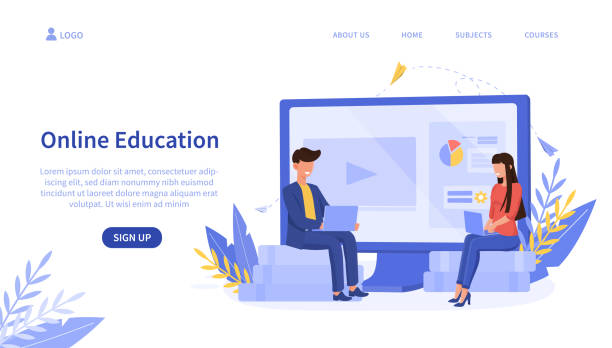
After thorough planning, it’s time to choose the right tool for your personal website design.
This decision is crucial because your chosen platform directly impacts ease of use, development capabilities, and website maintenance costs.
There are various options for building a personal website, each with its own advantages and disadvantages.
One of the most popular options is Content Management Systems (CMS) like WordPress.
WordPress, due to its high flexibility, numerous plugins, and large user community, is an ideal choice for many individuals and makes personal website design easy even for non-programmers.
Other options include Website Builders like Wix, Squarespace, and Zyro, which allow for drag-and-drop website creation and are very suitable for those seeking simplicity and speed.
These tools typically offer ready-made and diverse templates.
For developers and individuals who need full control over the site’s code and functionality, custom web development using programming languages such as HTML, CSS, JavaScript, and PHP is also an option.
This method provides the most flexibility but requires a high level of technical knowledge.
When choosing a platform, also consider your future needs; will your website grow larger in the future, or will more functionalities be added to it? Choose a platform that allows for growth and scalability.
Below is a comparison table to help you make your decision:
| Platform | Advantages | Disadvantages | Suitable for |
|---|---|---|---|
| WordPress | High flexibility, numerous plugins, SEO-friendly | Requires initial learning, security responsibility | Blogs, small business sites, advanced resumes |
| Wix / Squarespace | Easy to use, beautiful design, strong support | Limited flexibility, higher long-term costs | Portfolios, small businesses, individuals with limited technical knowledge |
| Custom Development | Full control, optimal performance, unique capabilities | High cost, time-consuming, deep technical knowledge required | Complex projects, specific needs, developers |
Visual Design and User Experience in Personal Websites
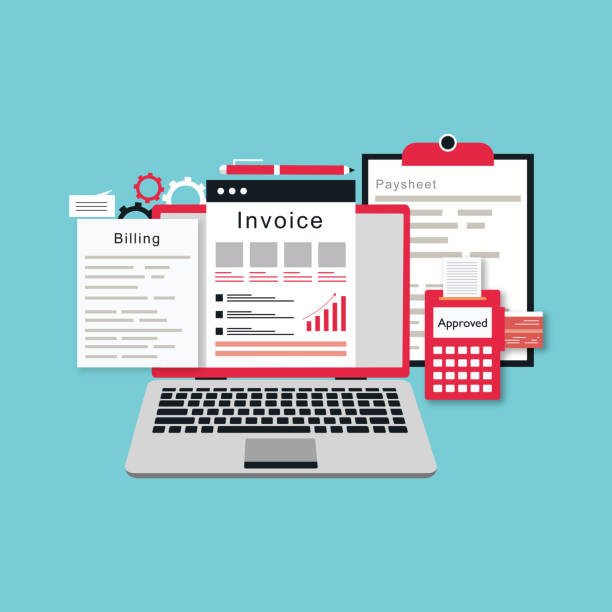
After platform selection, visual design and user experience (UX) are two critical factors that determine the success of your personal website.
A beautiful and user-friendly website not only has visual appeal but also encourages users to stay and explore more of your site.
In visual design, choosing an appropriate color palette, readable fonts, and high-quality images is of paramount importance.
Colors can evoke different emotions in users; therefore, choose colors that align with your brand and personality.
Fonts should be not only aesthetic but also perfectly readable, especially for long texts.
Using high-quality images and videos, in addition to increasing visual appeal, can convey your message more effectively.
In the user experience section, the focus is on simple navigation and easy access to information.
Users should be able to move around your site easily and find whatever they are looking for.
Clear menus, distinct Call-to-Action buttons, and a logical structure are all essential elements of good UX.
Furthermore, responsive design is extremely vital; meaning your website should display correctly and with an appropriate appearance on all types of devices, including desktop computers, tablets, and smartphones.
Site loading speed also plays a significant role in user experience; today’s users are impatient, and a slow site can drive them away.
Optimizing images, using caching, and choosing a reliable hosting provider help improve speed.
A personal website design that pays attention to these details not only looks professional but also gives users a pleasant feeling and helps them connect more easily with your content.
Visual content and site interactivity are key points of a successful design and contribute to your online reputation.
How much does losing business leads due to an unprofessional website cost you? Solve this problem forever with professional corporate website design by Rasaweb!
✅ Increase credibility and trust of potential customers
✅ Easier attraction of new business leads
⚡ Get a free consultation now!
Creating Engaging and Purposeful Content
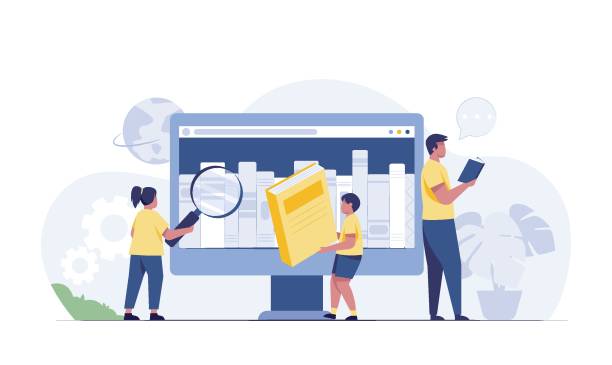
The heart of every personal website is its content.
Creating engaging, unique, and purposeful content not only helps you connect with your audience but also plays a key role in improving SEO ranking and attracting more traffic.
At this stage, you need to answer fundamental questions: What type of content will be appealing to my audience? How can I creatively present my knowledge and experiences? Your content can include blog articles, portfolios, videos, podcasts, infographics, and even a Q&A section.
It is important that your produced content is valuable and informative and addresses the questions and needs of your audience.
Naturally use keywords related to your field of activity in the text so that search engines can better identify your content.
Also, to increase engagement, you can use storytelling techniques; instead of merely presenting facts, tell stories from your personal experiences that foster empathy and a closer connection with the audience.
Regular content updates are also of high importance.
A website with fresh content is not only more appealing to search engines but also encourages users to revisit your site.
You can create a content calendar and have a schedule for regular article publication or portfolio updates.
Ask your users to share their opinions and interact with them; this not only gives you feedback but also strengthens a sense of community building.
Remember that every piece of content you place on your personal website is a reflection of your personality and expertise.
So, dedicate enough time to researching, writing, and editing it.
A personal website design with rich and high-quality content can establish you as a credible authority in your field and pave the way for greater successes.
Question-provoking content can also generate discussion and increase user engagement.
Search Engine Optimization (SEO) for Personal Websites
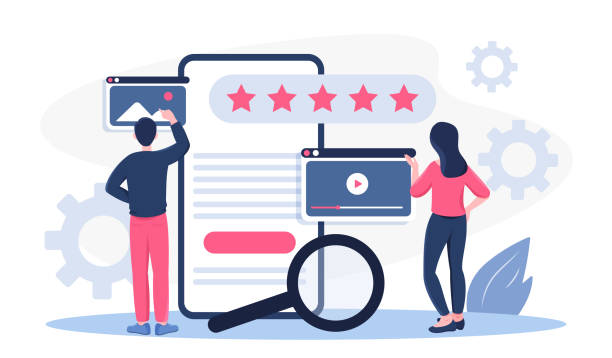
After designing your personal website and creating content, it’s time for the crucial stage of Search Engine Optimization (SEO).
SEO refers to a set of techniques that help your website achieve a higher rank in Google and other search engine results, thereby attracting more organic traffic.
One of the first steps in SEO is keyword research.
Identify the words your target audience uses to search for content similar to yours and strategically incorporate them into your titles, subtitles, and article text.
However, be careful to avoid excessive keyword stuffing, as this is negatively perceived by search engines.
Technical site optimization is also very important.
Ensure that your website has a high loading speed and is mobile-responsive.
Using appropriate meta tags, attractive meta descriptions, and readable URLs all contribute to improving SEO.
Creating a sitemap (sitemap.xml) and submitting it to Google Search Console also helps search engine crawlers better understand your site’s structure.
Building quality backlinks from other reputable websites to yours is one of the most powerful ranking factors.
These links indicate to search engines that your content is valuable and trustworthy.
You can earn backlinks by producing excellent content that others naturally link to, or through collaborations with relevant websites.
A personal website with strong SEO helps you stand out among competitors and ensures your voice reaches a wider audience.
This is an ongoing process that requires regular monitoring and updates to ensure your website consistently remains at the top of search results.
Security and Maintenance of Your Website

After designing your personal website and launching it, security and maintenance are two aspects that should never be overlooked.
An insecure website can become a target for cyber attacks, endanger your or your users’ information, and damage your credibility.
The first step in ensuring security is using an SSL certificate (Secure Sockets Layer).
This certificate encrypts the communication between the user’s browser and your website’s server, and by displaying a lock icon next to the website address, it builds user trust.
Ensure that you always use a strong and unique password for your website’s administration panel and hosting accounts.
Regular updates of the platform (such as WordPress), themes, and plugins are also crucial.
Developers constantly release security patches to fix vulnerabilities, and failure to update can open doors for hackers.
Installing a website firewall (WAF) can help protect against common attacks like SQL injection and XSS.
Regular backups of your website’s data are also of high importance.
In case of any security or technical issue, having a backup allows you to quickly restore your website to normal operation.
These backups can be daily, weekly, or monthly, depending on the frequency of content changes.
Additionally, monitoring server logs and suspicious activities can help in early detection of threats.
Website maintenance also includes database optimization, clearing cache, and checking for broken links, all of which contribute to better performance and improved user experience.
A personal website that is well-maintained and secured can serve as a valuable asset to you for many years and preserve your reputation.
This is a continuous news and analytical process that requires constant attention and follow-up.
| Action | Description | Frequency |
|---|---|---|
| Install SSL Certificate | Encrypt communications and increase trust | Once (and annual renewal) |
| Update Platform and Plugins | Apply security patches and improve performance | Weekly/Monthly |
| Regular Backups | Protect information against loss | Daily/Weekly |
| Use Strong Passwords | Prevent unauthorized access | Once (and periodic change) |
| Monitor Performance and Speed | Optimize for better user experience | Monthly |
Introducing and Marketing Your Personal Website to Others
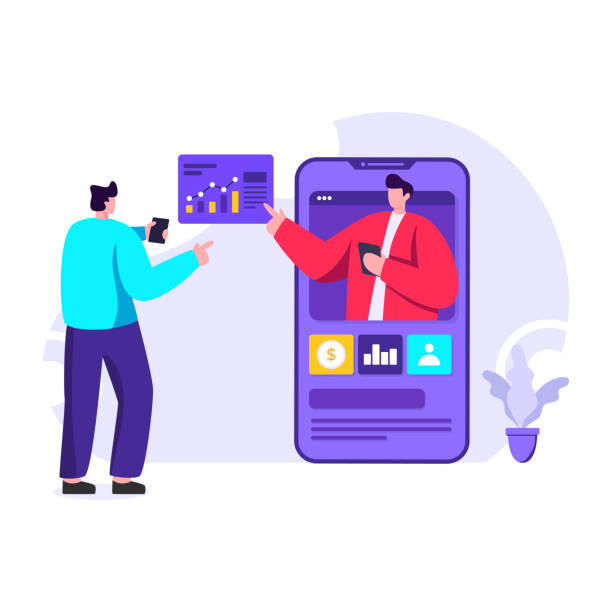
After designing your personal website and ensuring its proper functionality, the next step is to introduce and market it to your target audience.
Having a great website alone is not enough; you need to actively promote it to others to achieve the desired traffic and engagement.
One of the first and simplest methods is to share your website’s link in your email signature, business cards, and social media profiles.
Make sure your website link is easily accessible on all platforms where you have a presence.
Content marketing is also a powerful strategy.
By producing valuable and shareable content, you can attract users to your website.
This content can include blog articles, infographics, videos, and even specialized reports.
When your content is engaging and useful enough, others will naturally share it and, thereby, direct new visitors to your website.
Social media marketing is also an effective tool.
Share links to your new articles and posts on networks like LinkedIn, Twitter, Instagram, and Facebook.
By using relevant hashtags and interacting with your followers, you can increase your website’s visibility.
Collaborating with other bloggers and experts in your field (Guest Blogging) can also help you reach new audiences and build valuable backlinks for your SEO.
Participating in online forums and specialized groups and answering user questions by referring to relevant content on your website is another way to attract targeted traffic.
Remember that personal website marketing is an ongoing process.
By consistently pursuing and implementing these strategies, you can gradually transform your website into an active hub for your personal brand and benefit from its advantages for growth and success.
This guiding and entertaining process helps you introduce your website to the audience in the best possible way.
Did you know a weak corporate website costs you many opportunities daily? Solve this problem forever with professional corporate website design by Rasaweb!
✅ Create a powerful and reliable image for your brand
✅ Targeted attraction of new customers and increased sales
⚡ [Get a free website design consultation now!]
Analyzing and Evaluating Website Performance
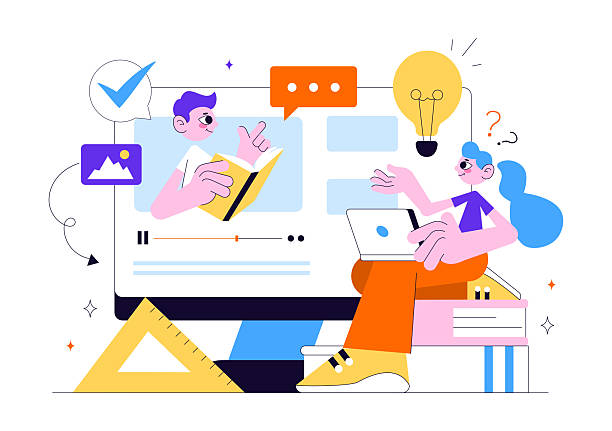
Merely designing a personal website and launching it is not enough; to ensure its success and effectiveness, you need to continuously analyze and evaluate your website’s performance.
Analytics tools like Google Analytics and Google Search Console provide invaluable information that can help you continuously improve your website.
Using Google Analytics, you can monitor metrics such as the number of visitors, popular pages, average session duration, Bounce Rate, and traffic sources (Direct, Organic, Social, Referral).
This data shows you how users interact with your content and which sections need improvement.
For example, if a specific page has a high bounce rate, it might indicate that its content is not engaging for users or does not adequately address their needs.
Google Search Console also provides information related to how your site appears in search results.
You can see the keywords users used to find your site, your website’s position in search results, and crawl errors.
This information is crucial for optimizing SEO and improving your site’s visibility.
Additionally, you can use site speed testing tools like Google PageSpeed Insights to identify and fix loading speed issues.
Direct feedback from users is also a valuable resource.
You can place contact forms, surveys, or feedback buttons on your website so users can submit their suggestions and criticisms.
This analytical and continuous approach helps you identify the strengths and weaknesses of your personal website and make data-driven decisions for its improvement.
This process ensures that your personal website is always progressing and getting closer to your goals.
The Future of Personal Websites and Final Tips

With continuous advancements in web technology, the future of personal website design looks brighter than ever.
Personal websites not only serve as a digital resume but have also transformed into platforms for creative expression, education, and deeper communication.
Trends indicate that personal websites are moving towards greater personalization, richer interactions, and the use of artificial intelligence.
The integration of AI-powered chatbots to answer visitor questions, the use of Augmented Reality (AR) to showcase portfolios in a more engaging way, and even audio websites that present content as podcasts are among the innovations we will witness in the near future.
Furthermore, attention to user privacy and data security will become increasingly important, and websites must be completely transparent and trustworthy in this regard.
Finally, a few concluding tips to maintain the success of your personal website design: always keep your content updated and remove outdated information.
Your website should be a living, dynamic entity.
Pay attention to user feedback and use it to improve your site.
Networking and collaborating with others in your field can create new opportunities to promote your website and increase your credibility.
Patience and perseverance are two key factors in the long-term success of a personal website; results don’t happen overnight.
By following these tips and continuously learning and updating your knowledge in web technologies, you can transform your personal website into a powerful tool for achieving your personal and professional goals.
This journey never ends; rather, it is constantly evolving, and every step in it will be a new and valuable experience.
Frequently Asked Questions
| Question | Answer |
|---|---|
| 1. What is a personal website? | It is a website created by an individual to showcase their personal information, resume, portfolio, interests, or blog. |
| 2. Why is having a personal website important? | It allows you to have a professional online presence, display your skills and experiences, connect with others, and manage your digital identity. |
| 3. What content should I include on my personal website? | It usually includes an about me page, resume, portfolio, contact information, a blog (optional), and a gallery (if needed). |
| 4. How do I choose a suitable domain name for my personal website? | It is best to use your first and last name (e.g., yourname.com). Choose a short, memorable name relevant to your identity. |
| 5. Do I need coding knowledge to design a personal website? | No, you can build your website without coding using Content Management Systems (CMS) like WordPress or Website Builders like Wix or Squarespace. |
| 6. What is hosting and what type of hosting is suitable for a personal website? | Hosting is the space where your website files are stored to be accessible to the public. For a personal website, Shared Hosting is usually sufficient and cost-effective. |
| 7. What is the importance of Responsive Design for a personal website? | Responsive design ensures that your website is displayed correctly and with an appropriate appearance on all devices (computer, tablet, mobile), which is crucial for an excellent user experience. |
| 8. How can I optimize my personal website for search engines (SEO)? | You can improve your website’s SEO by using relevant keywords, producing high-quality content, optimizing images, having a suitable URL structure, and acquiring backlinks. |
| 9. How do I keep my personal website updated? | Regularly add new content (such as blog posts or new portfolio items), keep contact information up-to-date, and ensure that the software and plugins used are current. |
| 10. Can I use my personal website to earn income? | Yes, you can earn income by selling your products or services, advertisements, affiliate marketing, or providing specialized consultations, depending on your content type and goal. |
And other advertising services from Rasaweb Advertising Agency:
Smart Google Ads: A new service for increasing click-through rates through intelligent data analysis.
Smart SEO: Designed for businesses seeking to increase click-through rates through attractive user interface design.
Smart Digital Advertising: An innovative platform for improving customer acquisition with custom programming.
Smart Customer Journey Map: A fast and efficient solution for digital branding focused on Google ad management.
Smart Customer Journey Map: An innovative platform for improving customer behavior analysis with SEO-driven content strategy.
And over hundreds of other services in the field of internet advertising, advertising consultation, and organizational solutions.
Internet Advertising | Advertising Strategy | Advertorials
Resources
Web Design Guide on IranICT Personal Site Design Tips on Mihanblog Personal Website Design on ParsianHost WebKama: Building a Successful Personal Website
? For your business to shine in the digital world and take a confident step towards the future, Rasaweb Afarin Digital Marketing Agency is by your side with its comprehensive solutions, from secure and attractive website design to SEO and content marketing. With us, experience a powerful and impactful digital presence.
📍 Tehran, Mirdamad Street, next to Bank Markazi, Southern Kazeroon Alley, Ramin Alley, No. 6

